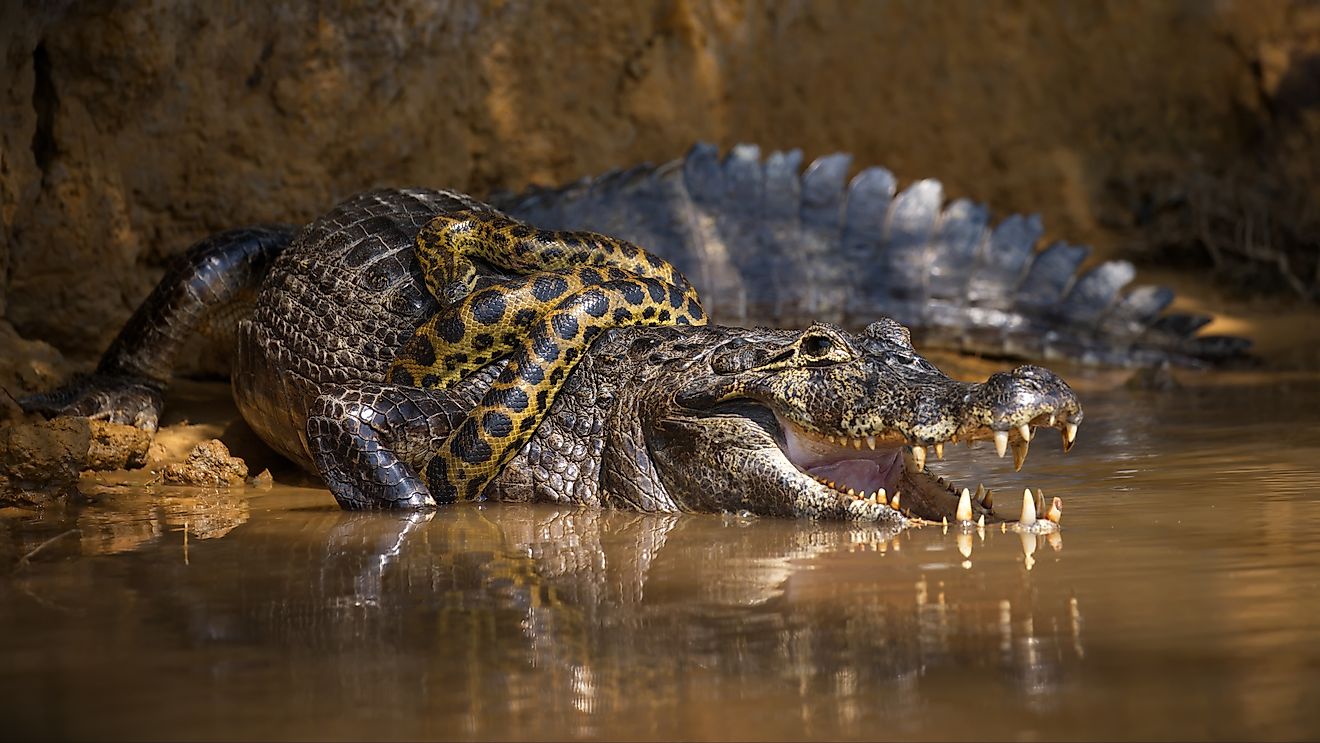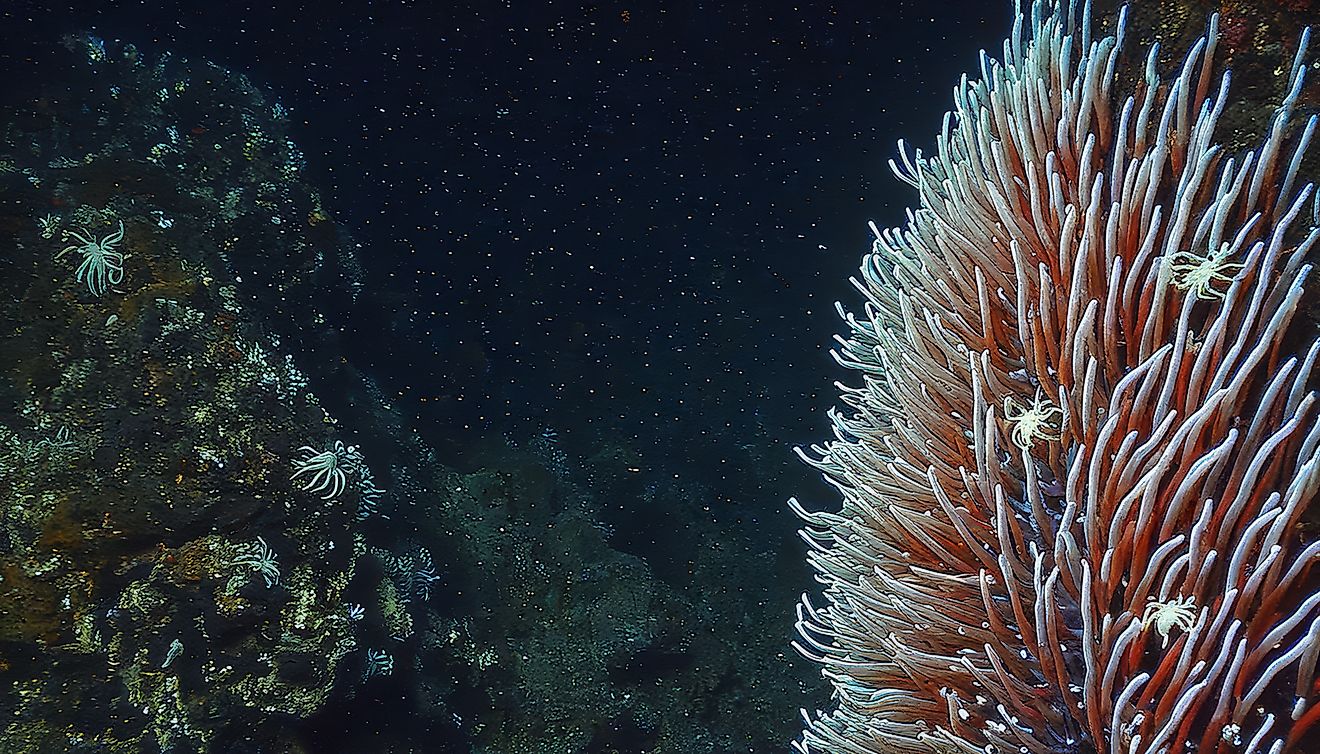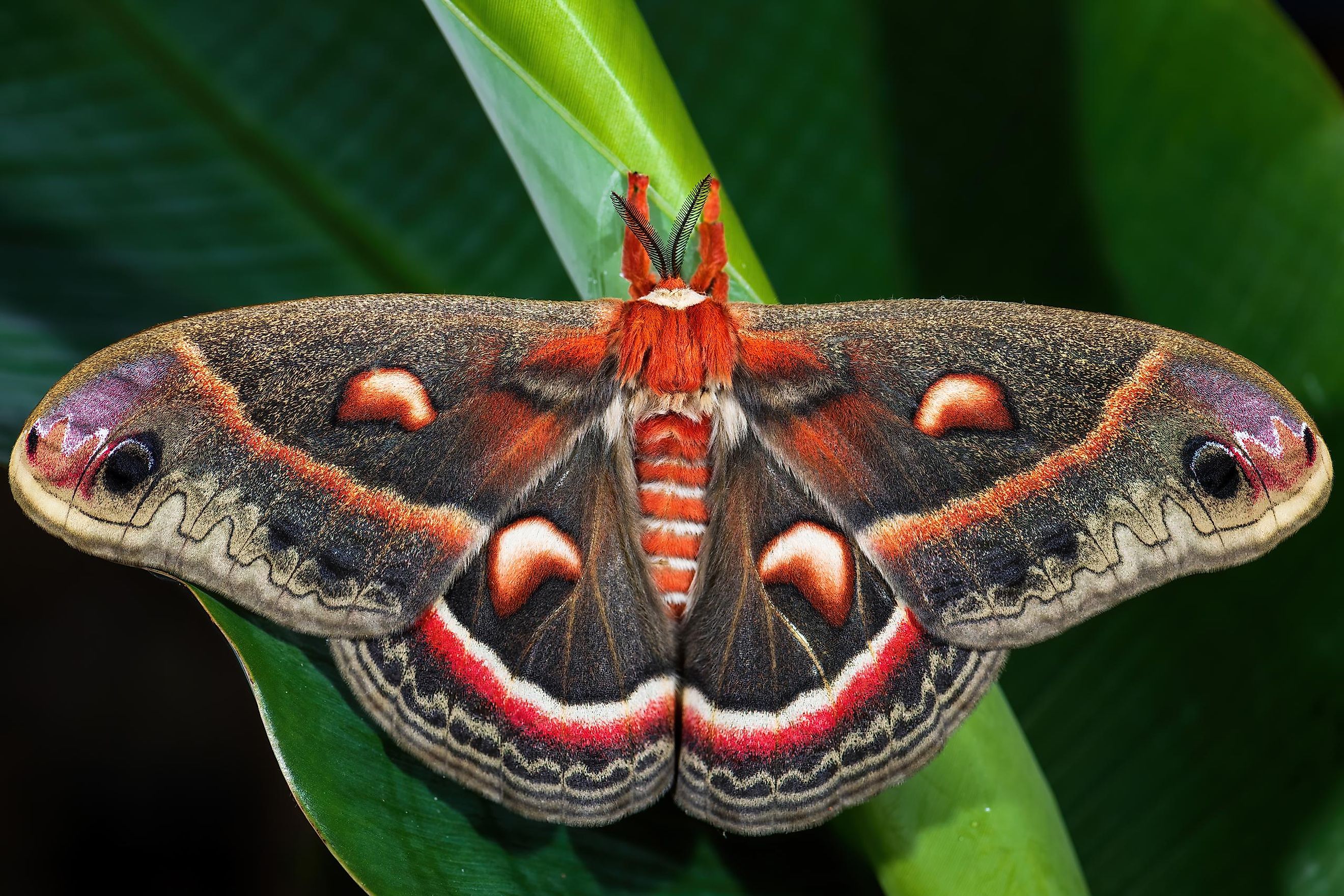
Discover The Largest Moth In North America
The Cecropia Moth (Hyalophora cecropia), a native of North America, is esteemed as the continent's largest moth, boasting an impressive wingspan of up to seven inches. An emblematic member of the Saturniidae family, this magnificent creature is renowned for its striking beauty and remarkable size. Despite being rather elusive due to its nocturnal lifestyle, the Cecropia Moth plays a significant role in the ecosystem, as its juvenile phase is an essential source of nutrition for young birds.
Physical Characteristics
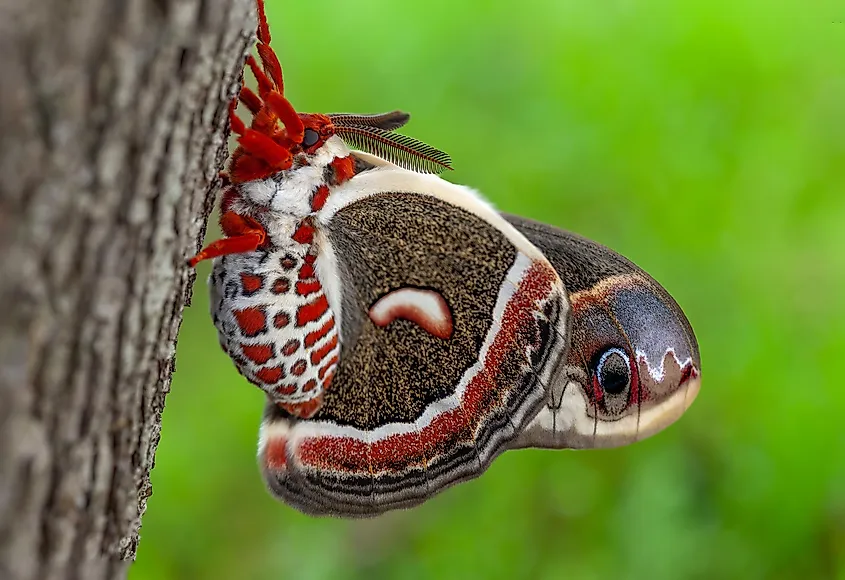
The Cecropia Moth is a stunning marvel of the insect world, distinctive for its large size and vibrant coloration. Adult moths exhibit sexual dimorphism, with males generally being slightly smaller but boasting broader, more feather-like antennae. This giant silk moth can reach a wingspan of 5 to 7 inches, presenting a spectacle of rusty-red to brown coloration on their broad, rounded wings. Intricate patterns of crescent-shaped white lines and eye spots embellish the wings, a natural defense that scares away large predators by falsely creating the illusion of a large creature.
A closer look reveals a stunningly delicate body. The thorax is covered in red-brown fur, giving it a hirsute appearance, while the abdomen displays alternating bands of red and white. Their distinctive, plumose antennae serve as sensory organs to detect the pheromones of potential mates, a crucial feature in the mating process.
Life Cycle And Development
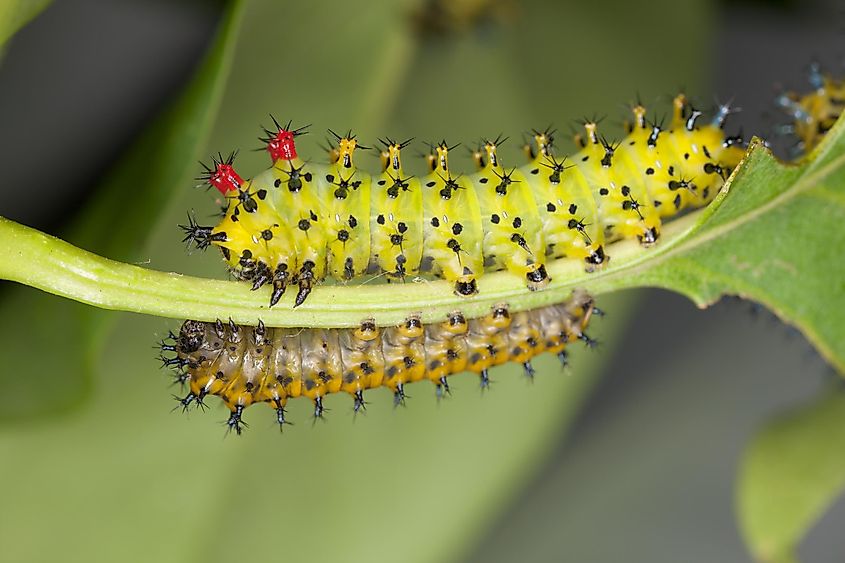
The life cycle of the Cecropia Moth, like many lepidopterans, is a transformative journey through four distinctive stages: egg, larva, pupa, and adult. The female moth lays clusters of spherical, creamy-white eggs on the leaves of a variety of host plants, initiating the life cycle.
The larvae, or caterpillars that emerge, are an impressive sight themselves, growing up to 4.5 inches in length. These caterpillars are bright blue-green with tubercles - small, knobby projections - of yellow and blue, punctuated with black spines. They are voracious eaters, consuming a vast quantity of leaves in preparation for their transformation.
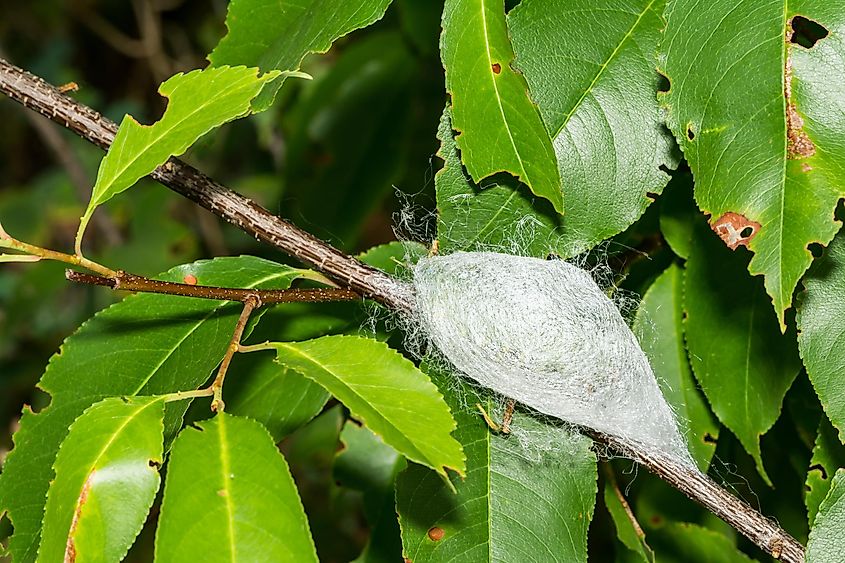
Upon reaching full size, the caterpillar spins a silk cocoon for its pupal stage, usually on the branch of the host plant. This protective encasing is sturdy and brown, shielding the pupa as it undergoes its remarkable metamorphosis into an adult moth. The cocoon the Cecropia Moth spins is unique among many moths. It is a double-layered cocoon with a loose outer layer and a tight inner one. The adult moth that eventually emerges is a nocturnal creature, living for about two weeks, dedicated to the pursuit of mating and laying the next generation of eggs.
Habitat And Distribution
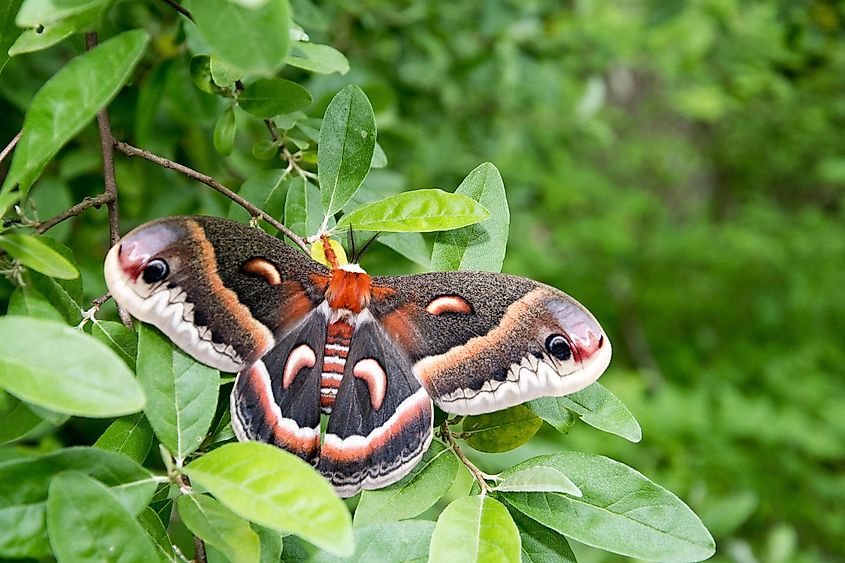
The Cecropia Moth is distributed across a vast geographic range in North America, from the Rocky Mountains eastward, covering almost every state in the U.S. and extending into much of Canada. This moth's distribution extends to various habitats, with each ecosystem presenting unique ecological features that allow the moth to thrive. For instance, in the high-altitude ranges of the Rocky Mountains to the coastal plains of the Eastern Seaboard, the moth finds its niche. It is also prominent in the southeastern United States, where it often frequents riverine habitats abundant with willow trees, one of its preferred host plants.
Climate and geography significantly influence the moth's distribution and lifecycle, with moths in the colder northern ranges typically producing one generation per year, while those in warmer southern regions may produce two.
Diet And Predation
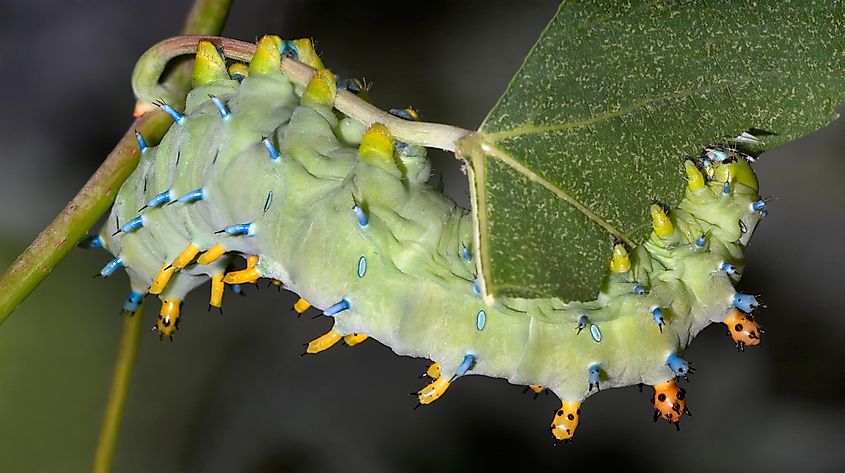
As caterpillars, Cecropia Moths are voracious leaf eaters. Their diet consists primarily of the leaves of a wide range of trees and shrubs, such as maple, birch, cherry, dogwood, and apple. Adults, however, do not eat, as their short lifespan of about two weeks is solely dedicated to reproduction. This is due to the fact that adults do not have functioning mouth parts, and the energy that they use in this phase comes from what they store in the larval stage.
Predation is a significant threat to the Cecropia Moth. While the caterpillars' vibrant coloration acts as a deterrent, they are preyed upon by a variety of birds, squirrels, and insect-eating mammals (particularly the white-footed mouse). Parasitic wasps and flies also pose a threat, laying their eggs on or inside the caterpillars. Adult moths, being nocturnal, are primarily preyed upon by bats.
Role In Ecosystem And Importance To Humans
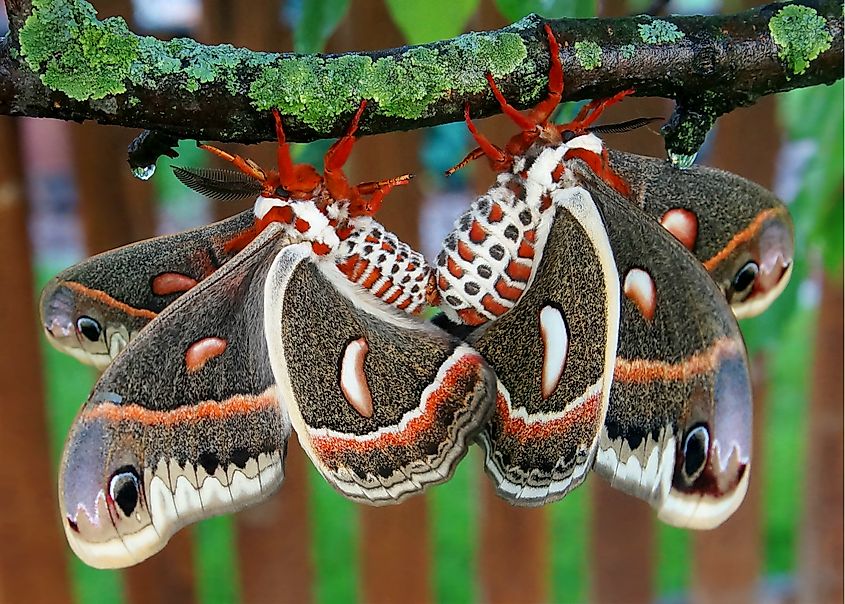
The Cecropia Moth plays a crucial role in the ecosystems they inhabit. As caterpillars, they contribute to the cycling of nutrients by consuming leaves and excreting waste. Additionally, they are a food source for a variety of animals, serving as a link in the food chain.
For humans, the Cecropia Moth holds interest for a variety of reasons. To scientists, these moths are a source of biological and ecological research, offering insights into lepidopteran life cycles and the role of insects in ecosystems. To nature enthusiasts and photographers, their grand size and stunning beauty make them a rewarding and sought-after sight. Last, they are silk producers and so are a part of silk production.
Conservation Status And Threats
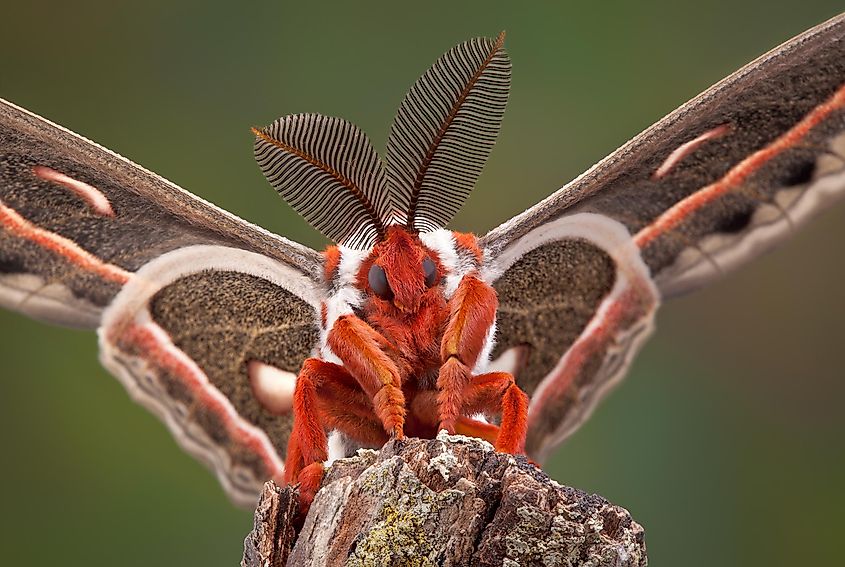
The Cecropia Moth is not listed on the IUCN Red List and is generally considered common within its range. However, like many species, it faces threats from habitat loss due to urbanization and deforestation. Additionally, increased use of outdoor lighting has the potential to disrupt the moth's nocturnal activities, including mating. Furthermore, the use of pesticides can also pose a threat to the Cecropia Moth, as it could kill off their caterpillar stage or the host plants they rely on for food.
Parasitism, particularly from the introduced parasitic fly Compsilura concinnata, is a significant threat. This fly was introduced to North America to control gypsy moth populations but has had a negative impact on native moth species, including the Cecropia Moth.
Climate change is another potential threat to the Cecropia Moth. As weather patterns become increasingly unpredictable, it may disrupt the delicate timing of the moth's lifecycle. Conservation efforts primarily involve maintaining the moth's natural habitat and mitigating the effects of light pollution and parasitism.
Studying And Observing Cecropia Moths
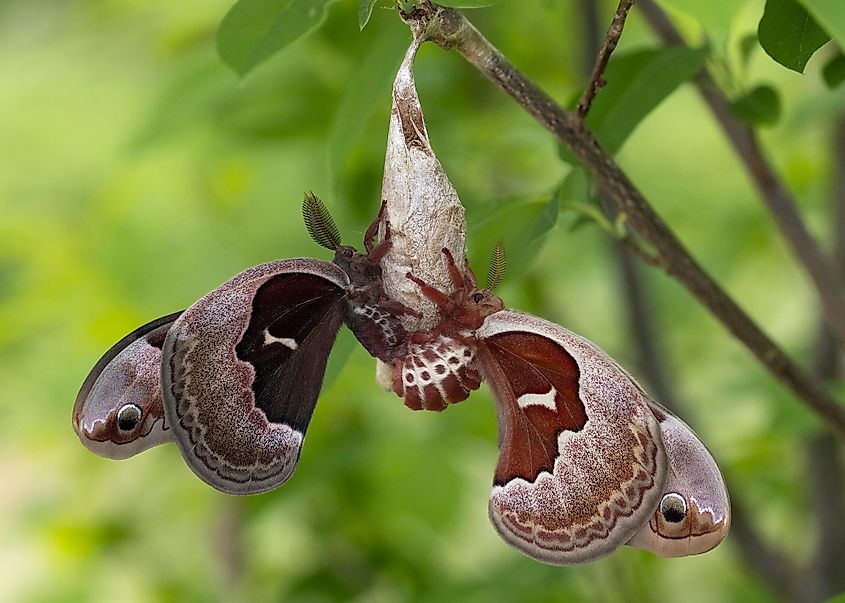
For those interested in observing these moths, the best time to spot adults is at night, especially during their peak activity in late spring and early summer. When attempting to raise them at home, it is crucial to have a supply of appropriate host plants and to release the adults promptly once they emerge, thereby minimizing disruption to their natural lifecycle.
The Cecropia Moth, North America's largest moth, is a remarkable and vital component of the ecosystem. It exemplifies nature's ability to create creatures of stunning beauty and intriguing life cycles. Despite facing challenges from habitat loss, light pollution, and parasitism, this species continues to thrive across much of North America, contributing to biodiversity and serving as a testament to the wonders of the natural world. The continued stability of this gorgeous moth depends on recognizing the importance of habitat conservation and the careful management of introduced species.

